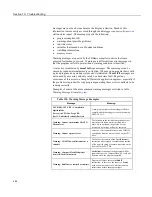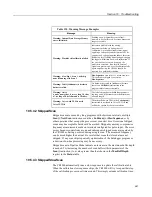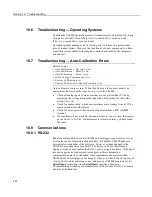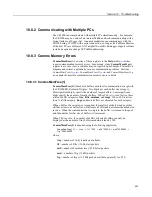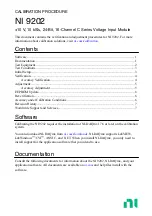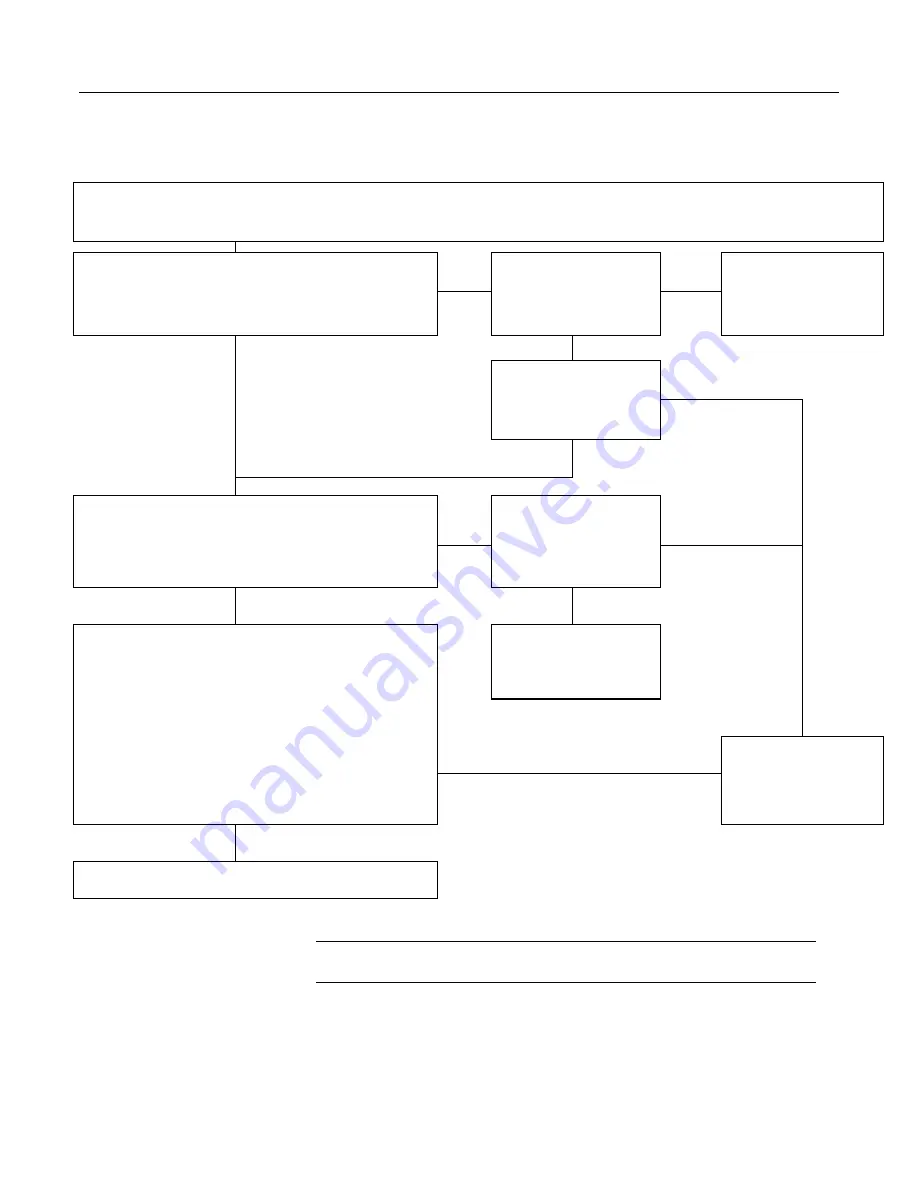
Section 10. Troubleshooting
Charging Regulator with ac or dc Transformer Test
Disconnect any wires attached to the 12V and G (ground) terminals on the PS100 or CH100 charging regulator. Unplug any batteries. Connect the power input ac or dc transformer to the
two CHG terminals. Polarity of the inputs does not matter. Only the transformer should be connected. Set the charging-regulator power switch to OFF. Connect the transformer to mains
power.
Transformer Test
Determine whether the transformer output is ac or dc voltage (labeling on the
transformer usually identifies the output voltage type). Set a voltmeter to read that
type of voltage. Measure transformer output across the two transformer leads by
placing a voltmeter lead on one
CHG
terminal, and the other lead on the other
CHG
terminal. Is the output 17 to 22 volts?
Taking care not to short the
transformer leads, remove the leads
from the charging regulator.
Measure transformer output across
the two leads. Is the output 17 to 22
Vac / Vdc?
The transformer is damaged and
should be replaced.
No
No
Yes
Yes
Reconnect the power source
(transformer / solar panel) to the
CHG
terminals on the charging
regulator. Measure the voltage
between the two
CHG
terminals. Is
the voltag
e ≥ 17 Vdc / Vac?
No
Yes
5 kΩ Load Test
1) Place a 5 kΩ resistor between a
12V
terminal and a
G
(ground) terminal on the
charging regulator.
2) Switch the power switch to
ON
.
3) Measure the dc voltage across the resistor.
Is the measured voltage 13.3 to 14.1 V?
Measure the voltage between the two
pins in a battery-connection
receptacle. Is the voltage 10.0 to
15.5 Vdc?
No
No
Yes
Yes
50 Ω Load Test
1) Switch the power switch to
OFF
.
2) Disconnect the power source (transformer / solar panel).
3) Remove the 5 kΩ resistor
4) Place a 50 Ω, 1 W resistor between a
12V
terminal and a
G
(ground) terminal on
the charging regulator.
5) Reconnect the power source and then switch the power switch to
ON
.
7) Measure the voltage across the ends of the resistor.
Is the voltage 13.0 to 14.0 Vdc (13.3 if circuit just adjusted)?
8) Switch the power switch to
OFF
.
NOTE
The resistor will get HOT in just a few seconds. After measuring the
voltage, switch the power switch to
OFF
and allow the resistor to cool before
removing it.
See
Adjusting Charging Voltage
(p.
to calibrate the charging
regulator, or return the charging
regulator to Campbell Scientific for
calibration.
Get Repair Authorization
The charging regulator is damaged
and should be repaired or replaced.
No
Yes
Test Completed
The charger is functioning properly. Remove the 50 Ω resistor.
10.9.3.4 Adjusting Charging Voltage
Note
Campbell Scientific recommends that a qualified electronic technician
perform the following procedure.
The procedure outlined in this flow chart tests and adjusts PS100 and CH100
charging regulators. If a need for repair or calibration is indicated after following
the procedure, see
Warranty and Assistance
(p. 3)
for information on sending items
to Campbell Scientific.
499
Summary of Contents for CR1000
Page 2: ......
Page 4: ......
Page 6: ......
Page 32: ......
Page 36: ......
Page 38: ......
Page 40: ......
Page 60: ...Section 4 System Quickstart Figure 16 PC200W View Line Graph 60 ...
Page 96: ......
Page 98: ...98 ...
Page 302: ......
Page 453: ...Section 8 Operation Figure 115 Using the Keyboard Display 453 ...
Page 456: ...Section 8 Operation Figure 118 Real Time Custom 456 ...
Page 457: ...Section 8 Operation 8 8 1 3 Final Memory Tables Figure 119 Final Memory Tables 457 ...
Page 458: ...Section 8 Operation 8 8 2 Run Stop Program Figure 120 Run Stop Program 458 ...
Page 460: ...Section 8 Operation Figure 122 File Edit 460 ...
Page 461: ...Section 8 Operation 8 8 4 PCCard Memory Card Display Figure 123 PCCard CF Card Display 461 ...
Page 478: ......
Page 506: ......
Page 536: ......
Page 636: ......
Page 642: ......
Page 644: ......
Page 676: ......
Page 677: ......


